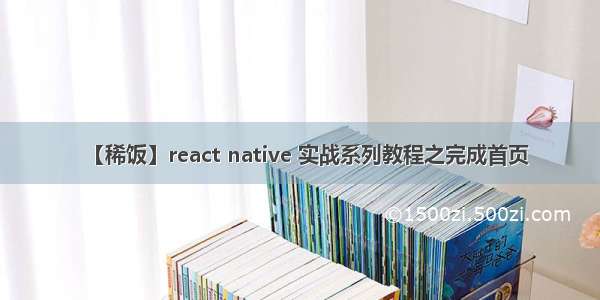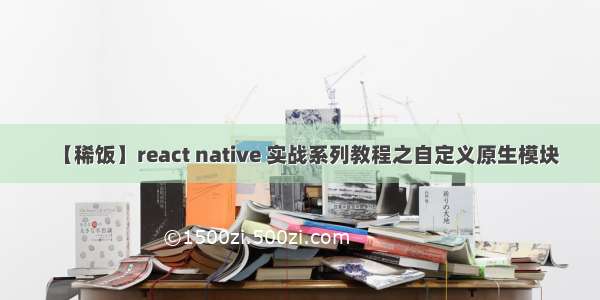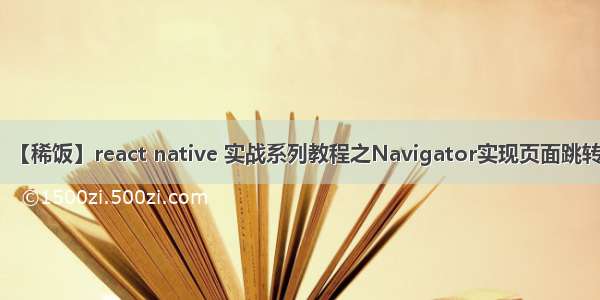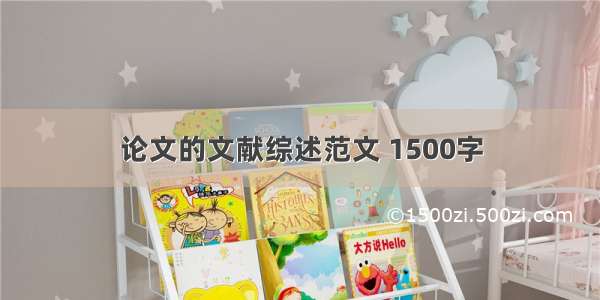
首页功能
前面,我们已经完成了影视信息组件的开发,接下来,我们要用该组件来完成首页界面功能的开发,如下图
可以看到,首页顶部一个标题栏,下面是‘最新’、‘最热’两个选项卡。我们要完成的有标题栏、选项卡、以及选项卡切换的内容。
标题栏
这里的标题栏,我们使用的是ToolbarAndroid,看名称我们就知道这个是android下特有的组件view,所以就立马想到,这个组件是ios、android不能通用的。因此,我们定义一个TitleBarComponent,方便以后重复使用和ios适配。这里,先提一下关于组件适配的一些问题。
组件平台适配
不同平台使用不同的组件,React Native 提供了以下四种解决方案
最直接的方案就是把组件放置到不同的文件夹下:
/common/components/ /android/components/ /ios/components/
根据平台不同在组件的文件命名上加以区分,如下:
BigButtonIOS.jsBigButtonAndroid.js
使用扩展名
BigButton.ios.jsBigButton.android.js
以上三种方案,再引用的时候去掉平台标识,如下
import BigButton from './components/BigButton';
Platform.select()
import React, {Component,Platform} from 'react';var Component = Platform.select({ios: () => require('ComponentIOS'),android: () => require('ComponentAndroid'),});
Platform.OS在iOS上会返回ios,而在Android设备或模拟器上则会返回android。
创建标题栏
根据上面的方案,我们这里使用的是使用扩展名的方案来适配平台的。在js/component下创建TitleBarComponent.android.js文件。
标题栏总共有标题、副标题和左边的返回按钮icon,返回按钮只有在子页面(二级页面)才有,因此我们定义如下属性
//初始化propsstatic defaultProps = {title:'',//标题subtitle:'',//副标题subScene:true,//是否是子页面};
然后,在render返回一个ToolbarAndroid
render() {return(<ToolbarAndroid title={this.props.title}navIcon={this.props.subScene?require('../../img/ic_actionbar_back.png'):null}titleColor='white'subtitle={this.props.subtitle}subtitleColor='#ebf0f6'actions={actions}onActionSelected={this._onActionClick.bind(this)}onIconClicked={this._onIconClick.bind(this)}style={styles.toolbar}/>);}//返回按钮事件_onIconClick(){}
这里几个属性说明下
title 就是标题titleColor 设置标题颜色subtitle 就是副标题subtitleColor 设置副标题颜色actions 了解android的都知道Toolbar右边还可以设置一些动作按钮(我们这里没有就不设置该属性)
它的格式如下,可以设置多个
const actions = [{title:'全部',show:'always',icon:require('../../img/icon_all.png'),showWithText:true},]
onActionSelected 动作按钮被触发时的回调(我们这里没有就不设置该属性)onIconClicked 标题栏左边的图标被点击后的回调(我们这里是返回按钮,返回图标可以到github上得到)style 设置整个标题栏的样式,高度、背景等。
TitleBarComponent的完整代码如下
import React,{Component} from 'react';import {ToolbarAndroid,DeviceEventEmitter,StyleSheet,Text,TouchableOpacity,}from 'react-native';export default class TitleBarComponent extends Component {constructor(props) {super(props);}//初始化propsstatic defaultProps = {title:'',//标题subtitle:'',//副标题subScene:true,//是否是子页面};render() {return(<ToolbarAndroidtitle={this.props.title}navIcon={this.props.subScene?require('../../img/ic_actionbar_back.png'):null}titleColor='white'subtitle={this.props.subtitle}subtitleColor='#ebf0f6'onIconClicked={this._onIconClick.bind(this)}style={styles.toolbar}/>);}//返回按钮事件_onIconClick(){}}const styles = StyleSheet.create({toolbar:{height:56,backgroundColor:'#ff5722',},});
这样我们就完成了标题栏的设计。
创建首页Scene
添加标题
接下来我们需要创建一个首页Scene,来展示首页功能。在js文件夹新建HomeScene.js文件,并为首页添加一个标题栏。
import React,{Component} from 'react';import {View,Text,StyleSheet,TouchableOpacity} from 'react-native';import TitleBar from './component/TitleBarComponent'export default class HomeScene extends Component{constructor(props){super(props);}render(){return(<View style={{flex:1}}><TitleBar title="首页" subtitle="看韩剧,上稀饭" subScene={false}/></View>);};}
然后将index.android.js使用HomeScene
import HomeScene from './js/HomeScene';class XiFan extends Component {render(){return(<HomeScene/>);}}AppRegistry.registerComponent('XiFan', () => XiFan);
执行代码,就可以看到如下效果
添加选项卡
这样首页的标题有了,我们接下来要添加‘最新’、‘最热’两个选项卡
在HomeScene内添加如下代码
state增加一个tabIndex属性,标识当前选中的tab项
constructor(props){super(props);this.state = {tabIndex:0,};}
接着就是绘制Tab了
//tab切换_onTabPress(index){this.setState({tabIndex:index,});}render(){return(<View style={{flex:1}}><TitleBar title="首页" subtitle="看韩剧,上稀饭" subScene={false}/><View style={{height:35,flexDirection:'row',justifyContent:'center',alignItems:'center',backgroundColor:'#ff5722'}}><View style={{flex:1}}><TouchableOpacity style={{flex:1,justifyContent:'center'}} activeOpacity={0.6} onPress={this._onTabPress.bind(this,0)}><Text style={this.state.tabIndex===0?styles.TabSelect:styles.TabUnSelect}>最新</Text></TouchableOpacity><View style={this.state.tabIndex===0?styles.TabUnderlineSelect:styles.TabUnderlineUnSelect}/></View><View style={{flex:1}}><TouchableOpacity style={{flex:1,justifyContent:'center'}} activeOpacity={0.6} onPress={this._onTabPress.bind(this,1)}><Text style={this.state.tabIndex===0?styles.TabUnSelect:styles.TabSelect}>最热</Text></TouchableOpacity><View style={this.state.tabIndex===0?styles.TabUnderlineUnSelect:styles.TabUnderlineSelect}/></View></View></View>);};
该段代码的核心主要是根据tabIndex是否被选中项,动态修改View的样式
var styles = StyleSheet.create({TabSelect:{flex:1,textAlign:'center',color:'white',},TabUnderlineSelect:{backgroundColor:'white',height:2,},TabUnSelect:{flex:1,textAlign:'center',color:'#d5d5d5',},TabUnderlineUnSelect:{height:0,},});
现在的效果是这样的
添加选项卡内容
应用的功能就是像在堆积木一样,一点一点叠起来。现在给选项卡下方添加对应的内容。选项卡切换时,底下切换到对应的内容,我们这里使用的是ViewPagerAndroid。
//ViewPager 页面发生切换时调用,修改tabIndex_onPageSelected(event){const position = event.nativeEvent.position;this.setState({tabIndex:position,});}_onPageScrollStateChanged(status){//idle 空闲,意味着当前没有交互。//dragging 拖动中,意味着当前页面正在被拖动。//settling 处理中,意味着当前页面发生过交互,且正在结束开头或收尾的动画。}render(){return(<View style={{flex:1}}>...//省略其它代码<ViewPagerAndroidstyle={{flex:1}}initialPage={0}onPageSelected={this._onPageSelected.bind(this)}scrollEnabled={true}pageMargin={0}onPageScrollStateChanged={this._onPageScrollStateChanged}keyboardDismissMode='on-drag'ref={(viewPager)=>{this.viewPager = viewPager}}><View style={{flex:1}}><DramaComponent url='/hanju/new/'/></View><View style={{flex:1}}><DramaComponent url='/hanju/renqi/'/></View></ViewPagerAndroid></View>);};
主要说几个属性
initialPage 初始显示哪个页面onPageSelected页面选中时的回调函数onPageScrollStateChanged 滚动状态发生变化时调用(目前没用到)ref 定义该组件的实例对象,这里我们将ViewPagerAndroid实例对象声明为viewPager,然后我们就可以在这个页面内使用该对象,比如,前面的_onTabPress方法,在tab切换时需要下面的内容也切换到对应的内容,所以我们对_onTabPress方法添加如下代码:
//tab切换_onTabPress(index){this.viewPager.setPage(index);this.setState({tabIndex:index,});}
调用了viewPager对象setPage方法,进行页面切换。
还有另一种定义ref方式,如下:
<ViewPagerAndroid ...//省略其它代码ref="viewPage">...//省略其它代码</ViewPagerAndroid>
然后使用对象时
//tab切换_onTabPress(index){this.refs.viewPage.setPage(index);this.setState({tabIndex:index,});}
再看下上面的代码,我们在ViewPagerAndroid内部塞了两个View,这两个View实际上就是要显示的内容了,它们就是我们之前自定义的DramaComponent,传入了不同的url,一个是最新的地址,一个是最热的人气,这样解析显示出来就是对应的数据了。
关于ViewPagerAndroid更多信息,可以查看ViewPagerAndroid
最后上一下本节的完成的成果效果图:
HomeScene.js的所有代码
import React,{Component} from 'react';import {View,Text,StyleSheet,TouchableOpacity,ViewPagerAndroid} from 'react-native';import TitleBar from './component/TitleBarComponent'import DramaComponent from './component/DramaComponent';export default class HomeScene extends Component{constructor(props){super(props);this.state = {tabIndex:0,};}//tab切换_onTabPress(index){this.viewPager.setPage(index);this.setState({tabIndex:index,});}//ViewPager 页面发生切换时调用_onPageSelected(event){const position = event.nativeEvent.position;this.setState({tabIndex:position,});}_onPageScrollStateChanged(status){//idle 空闲,意味着当前没有交互。//dragging 拖动中,意味着当前页面正在被拖动。//settling 处理中,意味着当前页面发生过交互,且正在结束开头或收尾的动画。}render(){return(<View style={{flex:1}}><TitleBar title="首页" subtitle="看韩剧,上稀饭" subScene={false}/><View style={{height:35,flexDirection:'row',justifyContent:'center',alignItems:'center',backgroundColor:'#ff5722'}}><View style={{flex:1}}><TouchableOpacity style={{flex:1,justifyContent:'center'}} activeOpacity={0.6} onPress={this._onTabPress.bind(this,0)}><Text style={this.state.tabIndex===0?styles.TabSelect:styles.TabUnSelect}>最新</Text></TouchableOpacity><View style={this.state.tabIndex===0?styles.TabUnderlineSelect:styles.TabUnderlineUnSelect}/></View><View style={{flex:1}}><TouchableOpacity style={{flex:1,justifyContent:'center'}} activeOpacity={0.6} onPress={this._onTabPress.bind(this,1)}><Text style={this.state.tabIndex===0?styles.TabUnSelect:styles.TabSelect}>最热</Text></TouchableOpacity><View style={this.state.tabIndex===0?styles.TabUnderlineUnSelect:styles.TabUnderlineSelect}/></View></View><ViewPagerAndroidstyle={{flex:1}}initialPage={0}onPageSelected={this._onPageSelected.bind(this)}scrollEnabled={true}pageMargin={0}onPageScrollStateChanged={this._onPageScrollStateChanged}keyboardDismissMode='on-drag'ref={(viewPager)=>{this.viewPager = viewPager}}><View style={{flex:1}}><DramaComponent url='/hanju/new/'/></View><View style={{flex:1}}><DramaComponent url='/hanju/renqi/'/></View></ViewPagerAndroid></View>);};}var styles = StyleSheet.create({TabSelect:{flex:1,textAlign:'center',color:'white',},TabUnderlineSelect:{backgroundColor:'white',height:2,},TabUnSelect:{flex:1,textAlign:'center',color:'#d5d5d5',},TabUnderlineUnSelect:{height:0,},});
总结
这节,我们完成了首页功能的开发,主要涉及到了标题栏、选项卡切换的功能,细节上提到了组件的平台适配、ViewPager的使用等。下一节,我们将开发主界面的功能,包括底部TabBar的开发以及Navigator实现页面的跳转,而页面的跳转将是最主要的一个功能,下一节我们再详细来述说。














